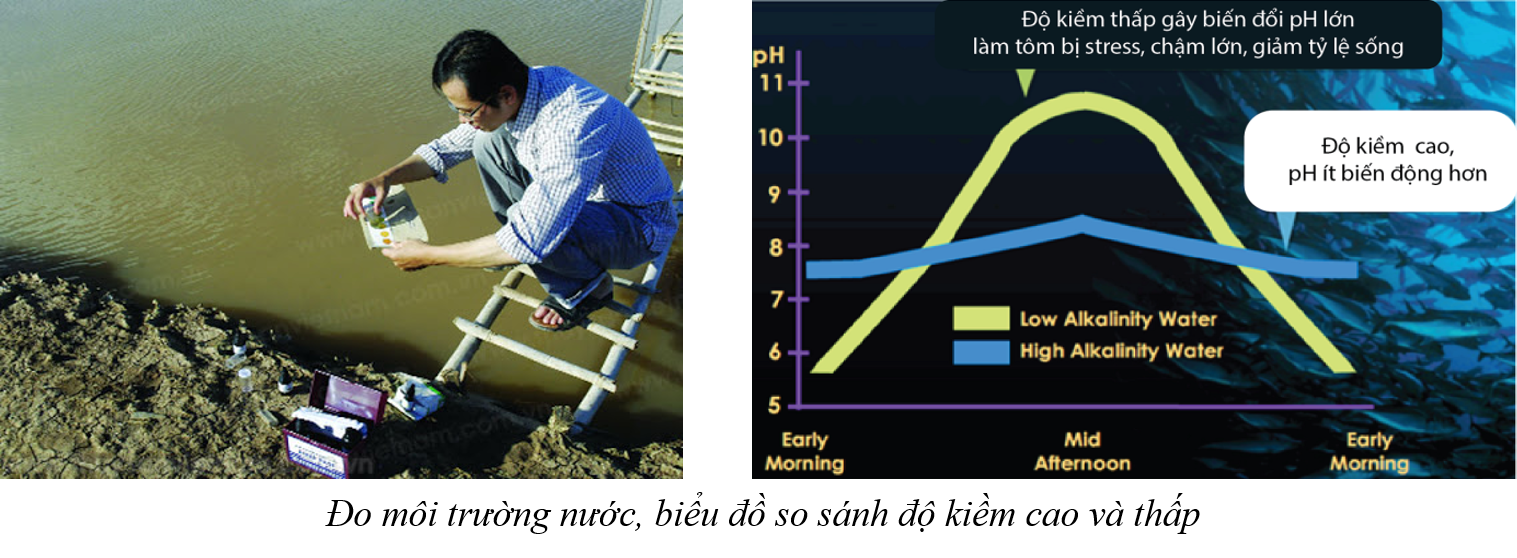Alkalinity is one of the important factors in shrimp farming because it is directly related to pH stability and the molting activity of shrimp. The higher the alkalinity, the more stable pH of the water. Low alkalinity significantly affects the molting ability and survival rate of cultured shrimp. High or low alkalinity depends on the soil, water source, and bicarbonate addition activity. In the farming process, alkalinity depends on the growth of algae and other organisms present in the pond, such as snails and bivalve mollusks. In addition, it is determined by the molting activity of the shrimp, the water exchange level, and the bicarbonate supplement activity of the farmer.
The ideal alkalinity is from 140-180 mg CaCO3 per liter.

1. Causes and consequences
When alkalinity is higher than 200 mg CaCO3 per liter, combined with a pH greater than 8.5, they prevent the shrimp molting process. The high content of heavy metals and alum in the pond causes calcification of the shrimp shell, making slow molting. It leads to shrimp’s slow growth and unequal growth rate.
When the alkalinity is lower than 100 mg CaCO3 per liter, snails and bivalve mollusks compete for alkalinity content with farmed shrimp in ponds. It affects the shrimp molting process, leading to soft shells, curled and white bodies, slow growth, and a low survival rate. Ponds with very low alkalinity (under 50 mg CaCO3 per liter) are often difficult to create watercolor.
2. Treatment measures
– In case of high alkalinity:
- Changing water, using EDTA with a dose of 2kg/1000m3 for 2 consecutive days, periodically 5 days/time if groundwater is used.
- Supplementing mineral with a dose of 2-5kg/1000m3 to stimulate shrimp to create a new shell.
– In case of low alkalinity:
- Killing snails and bivalve mollusks at the beginning of the crop.
- Stocking density should be appropriate. The salinity is higher than 5 ppt.
- Increasing alkalinity by using Dolomite lime and CaCO3 with a dose of 10kg/1000m3, and Bicarbonate with 2kg/1000m3, periodically 2 days/time.
- Using micro-minerals and macro-minerals to stimulate shrimp shell hardening.
- Frequently checking the pond water environment for timely treatment measures.
By Master Huynh Duy Phong – Binh Minh Aquaculture Development Co., Ltd

 Tiếng Việt
Tiếng Việt